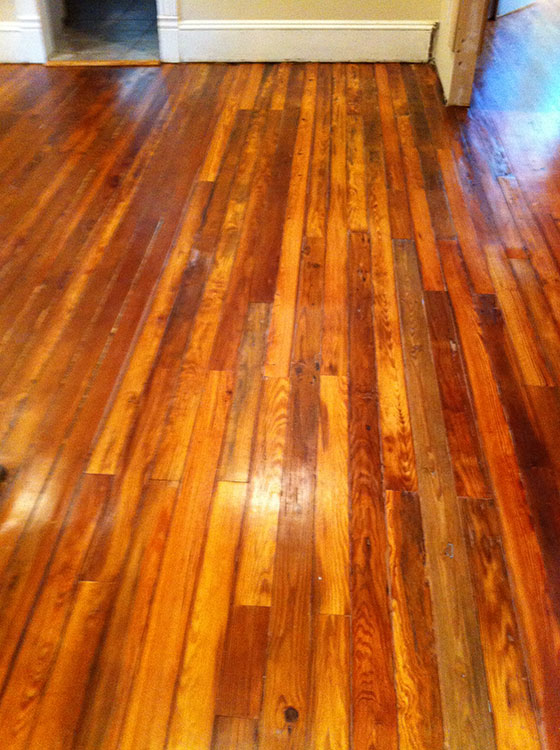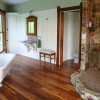It’s typical that over the course of a century your bungalow or Victorian’s vintage heart pine floors have taken a world of abuse. Atlanta’s inner city neighborhoods went through a host of hard times: old houses were portioned off into rooming houses; floors were damaged by errant water: leaking
roofs, leaking faucets, leaking tubs, inoperable windows. Some homes had giant heaters built under the floors with large drafty grates. Add to that, heating methods were not safe and many houses suffered fires, scorching large parts of the original flooring.
These issues leave homeowners with the challenge of repairing flooring with wood that is no longer harvested, as original trees were 200-plus year old members of a long gone “virgin” forest. And, sadly, many contractors aren’t familiar enough with old houses to know the difference between gorgeous old growth heart of pine flooring and modern day longleaf yellow pine milled from 10 year old trees. While the wood is technically the same species, the coloration is night from day: whitish yellow from the young, modern trees versus a deep rich brownish red from the centuries old trees.
The reason for the rich reddish color is the tightness of the tree’s ring growth combined with the resins found in the slow growth. Moreover, in an old house, where the floors
have been installed and used for 100 years, there is oxidation of the wood from
light exposure and the patina of a century’s worth of feet and furniture.
So, how do you repair these old boards? The best solution is a simple concept but
somewhat difficult to source: use reclaimed old boards from other old houses.
(Alternatively, you can buy boards re-milled from factory beams or trees
pulled out of the bottom of rivers.) I’m fortunate in that I have a large stash of salvaged heart pine boards that I keep on hand for just these kinds of flooring jobs. They go in looking like a patchwork quilt, all different colors of paint and dirt and polyurethane. (Yet, pretty in that shabby chic way. One client asked us to lightly sand the
boards, in their addition, to show the paint colors and just poly over the old
paint to preserve that quilt look. It was a beautiful installation.) But after a good sanding and sealant and two coats of satin poly, the reclaimed boards blend beautifully with original boards. Not just do they have the same patina, but because of the age and warping and use, tight spacing is impossible. That mimics the spacing in
the original floors. We mix together heart pine dust from the sanding with a putty and “grout” to fill the gaps between boards. Overall, the material and process allow us to match the growth, age, and use of wood for a cohesive and beautiful floor. And in this careful attention to detail, there lies the art of the imperfect.




